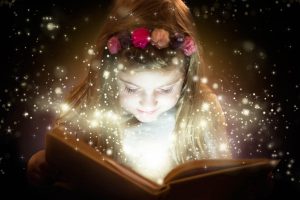Why Are Educational Toys So Important?
Educational toys for children are the ones that generally create the most uncertainty amongst parents. At what age is it a good idea to introduce toys and games to children? Which toys fall into which category? Will they end up being boring or less interesting? Will they get left alone?
There are many toys designed for educating children, but what they all have in common, despite how different they are, is their aim: to stimulate many different areas, like the five senses, creativity, language skills, sociability, reasoning, curiosity etc. They try to achieve the following:
- Stimulate their intellectual development.
- Raise their self-esteem.
- Empower their capabilities of affection and their social interaction.
- Help to develop their memory.
- Assist in their education.
- To have fun!
Educational toys are therefore to complement the education of small children. They exist for all ages, suitable for use in school and out, alone or with friends or parents, free play or structured play. Definitively, for all interests and goals!
As we suggested before, lots of parents tend to think that educational toys can be boring. And yes, it’s true that most children are attracted by lights, sirens, buttons, and colors that might not be included in these types of toys.
But, this does not mean that they are boring. If something is boring or not, depends on the child. The variety of toys available is very large and so it is recommendable to search for different options and let your child find out for themselves. You will find the right choice.
Advantages Of Educational Toys For Small Children
Apart from not being boring, educational toys actually present important advantages over more conventional toys. It isn’t about choosing one type or another, of course not, but about understanding each other’s strengths and making sure that your children play with both.
Parents should make decisions based on the following characteristics:
- Resistance: Manufacturers design and make educational toys to last that aren’t easy to break or destroy. If your children are especially boisterous, these types of toys should give you assurances that you won’t need to buy replacements the very next day.
- Safety: Precisely because of their aim and function, these types of toys are made in strict compliance with all the latest health and safety guidelines. They are very unlikely to cause any accidents.
- Peaceful: If anything pleases any parent, after getting home from a hard days work, is to find their children playing with a toy that doesn’t make loud noises. In this respect, educational toys are perfect. No buttons to push making the same noises over and over again!
A Few Examples Of Educational Toys That You Can Give To Your Children
- Children between 0 and 3 years old. Baby parks, interactive books, stacking toys, simple musical instruments (a drum for example), dolls.
- Children between 3 and 6 years old. Construction toys, puzzles, games with colors, toys for molding and sculpting, plasticine, 3D brainteasers made from wood or plastic.
- Children between 6 and 9 years old. More complicated board games, classification games, more advanced musical instruments, artistic games.
These are only a few suggestions as the lists are endless. You must bear in mind that it is just as important the type of toy that you chose, as to where from. There are many different places that sell toys, but not all of them offer the same guarantees or quality.
We recommend that you always buy toys from specialized outlets, and if possible, specialized specifically in educational toys. Not only will you find better guarantees, but the staff will be able to give you better assessments based on the age of your child and their needs.
And finally, don’t forget that a lot of conventional toys can be transformed into educational toys with the correct usage, even if they weren’t designed to do so. Using your imagination you can achieve fantastic results with almost any type of toy. Try it!
You might also like: Experiments for Kids





